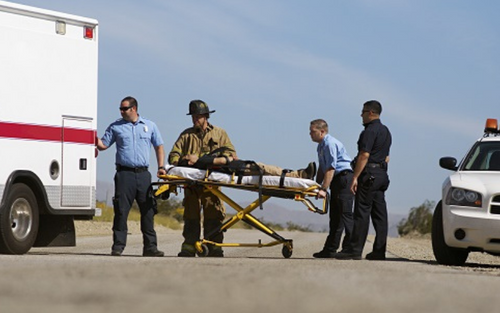How Can First Responders Protect Themselves from Carbon Monoxide Poisoning
First responders and emergency response teams should use portable carbon monoxide detectors to protect themselves and their colleagues from carbon monoxide poisoning. Without a monitor, this gas is often impossible to detect. As an odorless, tasteless, invisible gas, it is known as a “silent killer.”
Carbon monoxide can easily collect in homes, businesses, vehicles, ambulances, and other confined spaces. First responders should wear this equipment when arriving on the scene, working in an unfamiliar location, or occupying a confined space.
CO poisoning can lead to headaches, dizziness, nausea, fatigue, vomiting, and chest pain. It can even be fatal in large doses or if the person is exposed for an extended period of time.
Recommendations for Gas Detection Equipment
These teams should look for carbon monoxide detectors for first responders that keep them mobile on the job. These individuals often must move quickly in the field, so the monitor should not interfere with their work or limit their mobility in any way. Lightweight, wireless monitors tend to be the best choice for these teams. They weigh just a few ounces or less, so first responders can easily wear them when treating patients and arriving on the scene.
To make sure the readings on the monitor are accurate, professionals should wear the monitor on their person when answering a distress call. Gas detection equipment can be worn on the person’s uniform near what’s known as the breathing zone, including the face, nose, and mouth. First responders should clip the monitor to their uniform collar for the most accurate results.
They can also clip the equipment to their medical bag, but the readings may be inaccurate if the monitor is closer to the ground than the person’s face. The monitor may have to be clipped to the person’s bag if they are wearing personal protective equipment, such as a face shield, hazmat suit, or body armor.
If CO is detected in the area, the monitor should alert the user immediately. This may include an audible buzz, flashing LED lights, or a physical vibration. Some teams may use all three alerts at once in case they can’t hear or see clearly on the job.
Emergency response departments and organizations can purchase these monitors in bulk to reduce the total cost. They tend to cost as little as $100 each, helping these teams keep their expenses as low as possible.
Maintenance and Calibration
First responders must regularly maintain their gas detection equipment to make sure it is working properly in the field. This includes regular bump tests and calibration.
These teams should look for equipment that requires as little maintenance as possible. Some monitors will last for two years without needing to be recharged or recalibrated. This helps first responders stay mobile in the field. Professionals should not have to waste precious time checking their equipment when a person’s life is in danger.
Adhere to this information when working as a first responder. A small CO monitor could make all the difference. Contact PK Safety for more information about our single gas monitors.
Recent Posts
-
Customizing Gas Detectors: Tailoring Solutions to Fit Your Unique Requirements
In today’s diverse industrial landscape, a one-size-fits-all approach to safety simply doesn’t cu …Jul 3rd 2024 -
10 Ways to Prevent Wildfires
You can prevent wildfires by extinguishing flames before you leave the worksite. Avoid practicing …Jul 1st 2024 -
ANSI/ISEA 138 Safety Gloves: Ensuring Hand Protection
The human hand is an anatomical masterpiece and arguably the greatest tool attached to our bodies …Jun 25th 2024





